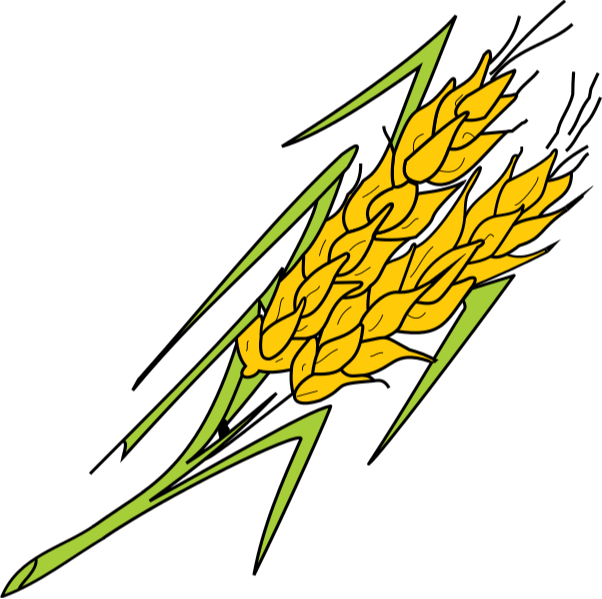GLUTEN SENSITIVITY
WHAT DOES IT LOOK LIKE?
GLUTEN is a water insoluble protein that is itself composed of proteins —- glutenin and gliadin (in wheat), secalin (in rye) and hordein (in barley). Because it is found in wheat-like grains, it is also found in most types of cereals, breads, flours, and pastas. However, not all foods from the grain family contain gluten. Examples of grains that do not contain gluten include wild rice, corn, buckwheat, millet, amaranth, quinoa, teff, oats, and sunflower seeds. However, before you rush out and buy all sorts of these grains thinking that you are doing yourself a favor, you had better take a few minutes to read about GLUTEN CROSS REACTIVITY.
Although you will also see soybeans on this list as well, stay far away from them as they are a XENOHORMONE — a Phytoestrogen (plant-based estrogen) that will cause far more problems than they help — unless they have been fermented first (miso, tempeh, natto, & tofu). Although oats and corn are also on this list and do not contain gluten, there are frequent problems with both as they are common Cross-Reactors. This is because most of the farms and milling facilities that process oats and corn, also process gluten-containing grains that can cross-contaminate products that do not contain gluten. Also, people who are extremely Gluten Sensitive are sometimes highly reactive to the substance in oats and corn that are analogous to gluten in wheat (Gluten Cross Reactivity).
Although only about 1 in 5,000 Americans are ever diagnosed with Celiac Disease (a full-blown systemic reaction to gluten / gliadin), the actual number of sufferers is estimated to be closer to 1 in 100. In other words, only about one in fifty Celiacs is ever diagnosed. This, however, pales to Gluten Sensitivity (aka Gluten Intolerance), which, while some experts say is only 10% of the American population, recent research is estimating it to be closer to 1 in 3 —– or even as high as 50% or greater (almost 85% of all Americans carry the genetic predisposition). Every study seems to be scarier than the study that came before it.
A large study carried out by the University of Maryland Center for Celiac Research in Baltimore has confirmed this. Scientists there tested 8,200 adults and children. Half the sample had various symptoms associated with Celiac Disease and, of those, one in 40 of the children tested positive —- as well as one in 30 of the adults. But it wasn’t just those who seemed ill who were having problems with wheat. There was far more worrying about what the Maryland researchers found when they tested the other half of the sample —- those who were healthy volunteers selected at random. Among kids under 16, one in 167 had Celiac Disease, while the rate among the adults was even higher – one in 111.
If those proportions are true for the American population in general, this means that nearly 2 million adults and 300,000 children have undiagnosed Celiac Disease – people who, sooner or later, are going to develop vague symptoms of feeling generally unwell, for which they will be offered various drugs that are unlikely to make much difference. Ultimately, they are at higher risk of a range of chronic diseases — mostly in the AUTOIMMUNITY FAMILY.
The problem though is in the test. In order to have true “Celiac Disease”, you have to have a positive biopsy result for the small intestine. Not only is this test not always accurate, it does not tell the whole story. When the body has an immune reaction, it makes antibodies. The test for anti-gliadin antibodies is known as AGA and people who test positive to AGA often have no sign of gut damage. In fact, according to Dr Alessio Fasano, who carried out the University of Maryland research, “Worldwide, CD ‘out of the intestine’ is 15 times more frequent than CD ‘in the intestine’.” Expert on Gluten Sensitivity, James Braly M.D. (my mom’s first cousin) estimates that between 10% and 15% of the US and Canadian populations have anti-gliadin antibodies. This puts them at risk of conditions as varied as psoriasis, multiple sclerosis, jaundice, IBS and eczema. Other experts feel that even this estimate is low —- possibly far to low.
A recent large study in the Journal of the American Medical Association found that people with diagnosed, undiagnosed, and Gluten Sensitivity had a higher risk of death from both heart disease and cancer, as well as other causes (
Small-Intestinal Histopathology and Mortality Risk in Celiac Disease). The deaths (between 1969 to 2008) in a three groups of 30,000 patients were examined: Those with full-blown Celiac Disease, those with INFLAMMATION of their intestine but not full-blown Celiac Disease, and those with Gluten Sensitivity (elevated gluten antibodies but negative intestinal biopsy). There was a 39% increased risk of death in those with Celiac Disease, 72% increased risk in those with gut inflammation related to gluten (can anyone say ‘LEAKY GUT SYNDROME‘?), and 35% increased risk in those with Gluten Sensitivity.A ten year old paper published in the prestigious New England Journal of Medicine listed 55 “diseases” that can be caused by eating gluten. These include osteoporosis, irritable bowel disease, inflammatory bowel disease, anemia, cancer, fatigue, canker sores, rheumatoid arthritis, lupus, multiple sclerosis, and almost all other Autoimmune Diseases. Gluten has also been linked to many psychiatric and neurological diseases, including anxiety, depression, schizophrenia, dementia, migraines, epilepsy, and neuropathy (nerve damage). It has also been linked to autism.


